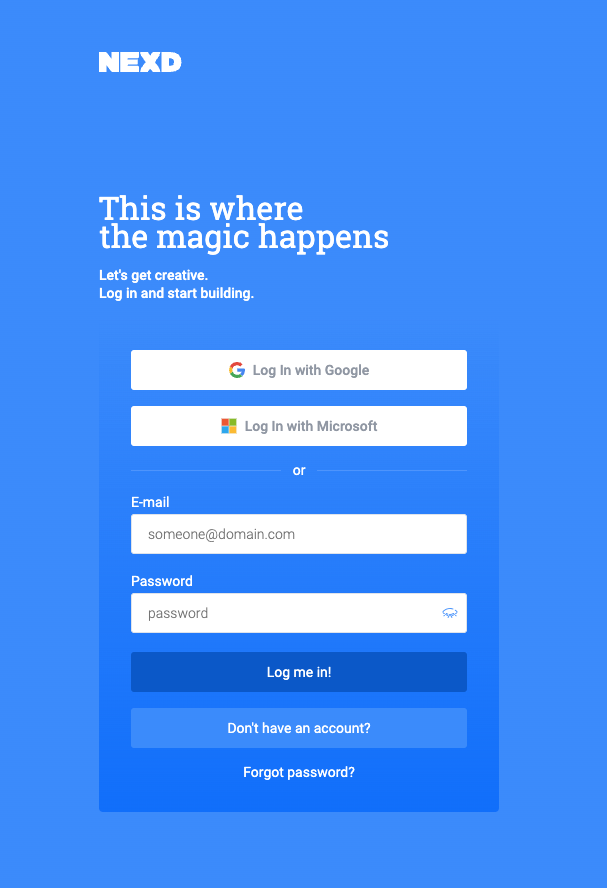Benefits and Examples of CTV Advertising
What is Connected TV Advertising?
Connected TV (CTV) advertising refers to the display of ads on internet-enabled televisions. This approach combines the large-screen appeal of traditional TV with the precision and interactivity of digital advertising. Viewers can see these ads while streaming their favorite shows, movies, or other content via platforms like Netflix, Hulu, or YouTube on their smart TVs.
What Are the Benefits of CTV Advertising?
Connected TV (CTV) advertising uniquely combines the visual impact of traditional television with the pinpoint accuracy of digital targeting. This blend allows advertisers to reach specific audiences with content tailored to their preferences and behaviors, ensuring that each ad dollar is spent efficiently.

Benefits include precise audience targeting, cost-effective advertising solutions, access to real-time metrics, and a variety of engaging ad formats.
Successful CTV Advertising Campaign Examples
CTV advertising is not yet in the regular media plans of all advertisers. However, some of the advertisers on the Nexd platform have tested on making their own.
When running CTV ads, the more important aspect is to consider the context and the device and use extras such as weather advertising or location-specific targeting. Eg. showing a car dealership ad to people in the vicinity only and another dealership ad for another location.
The Problem With Custom CTV Ads
Looking at examples like BrightLine’s Experience Library, it’s easy to get excited about the creative possibilities of CTV ads. But what you don’t see behind those polished demos is just how complicated and costly they can be to build.

Custom interactive CTV ads typically require:
- Significant time investment – Projects can take weeks or months to complete.
- Specialist development – You’ll likely need to work with external vendors or rely on platform-specific teams.
- High production costs – Custom work doesn’t come cheap, putting it out of reach for many brands.
- Platform-specific builds – Interactive features are often designed for a single environment (like Roku or Samsung), meaning they won’t work universally.
- Limited testing and control – Even with the budget and time, it’s hard to guarantee your ad will behave the same across all platforms.
So while these high-end examples are impressive, they’re rarely scalable and not ideal if you want to move fast, test creatively, or optimize across platforms.
CTV Ad Formats
Before diving into the types of CTV ads you can create, it’s important to distinguish between two key concepts:
- Technical ad standards like VAST, VPAID, and SIMID determine how an ad is delivered, tracked, and rendered on screen.
- Creative ad formats like interstitials, overlays, or interactive ads define what the viewer actually sees and experiences.
These two layers work together — for example, a VAST tag might deliver an interstitial video ad, while a SIMID setup enables secure interactive functionality. For a deeper look at how different video ad formats are defined and recommended across CTV platforms, check out the IAB’s Ad Format Guidelines for Digital Video and CTV.
For example, some ad formats like VPAID are not supported in CTV environments, and may even block your ad from going live. A notice on the platform will appear when VPAID elements are found, signaling a compatibility issue.
The IAB now recommends using SIMID (Secure Interactive Media Interface Definition) for interactive video ads. SIMID is designed to replace VPAID with a more secure, transparent, and performance-friendly standard. However, not all CTV video players support SIMID yet, though adoption is growing across the industry.
CTV advertising is not one-size-fits-all. Here are a few formats that exemplify the medium’s versatility:
- Interstitial Ads: Full-screen ads that appear during breaks in streaming content. These are ideal for capturing attention without the constraints of traditional TV slot times.
- Overlay or Sticky Ads: These ads appear as overlays on the bottom portion of the screen during video playback, which allows for subtlety and integration without interrupting viewing. Sticky placements are most common on mobile pages/apps that stick to the screen and are usually less intrusive in their size (e.g. 320×50 for mobile and 1000×50 for desktop).
- Interactive Ads: Viewers can interact directly with these ads, clicking through to a landing page or watching additional content. This format is perfect for engaging and involving the audience, increasing the likelihood of conversion.
Best Practices in Connected TV Advertising
To maximize the effectiveness of your CTV campaigns, consider these best practices:
- Understand Your Audience: Deep dive into analytics to understand who is watching and what they care about. Tailor your content to speak directly to their interests and needs.
- Be Creative: Use high-quality visuals and compelling narratives to stand out. Remember, the big screen is your canvas.
- Test and Learn: Use A/B testing for different elements of your ads to see what works best with your target audience.
- Timing Is Key: Align your ads with relevant events or viewer habits. For instance, promoting fitness products in January, when viewers are more likely to commit to New Year resolutions.
What is a CTV App?
A CTV App is an application designed to run on smart TVs and connected devices such as streaming media players. Examples are apps on Smart TVs such as Amazon Prime Video, Disney+ or Roku.

CTV apps are designed with a user interface that is optimized for large screens and can be navigated using a remote control. Many CTV apps offer personalized content based on user preferences and viewing history. Some also provide interactive features, such as the ability to vote or play along with a live broadcast.
Examples from CTV App Commercials
CTV apps are not just platforms for streaming; they’re also evolving advertising spaces.
For example:
- a popular fitness app ran commercials on CTV featuring quick, engaging workout routines that viewers could do at home
- another app focused on cooking tutorials, used commercials to highlight easy dinner recipes, effectively driving app downloads and subscriptions
What are the challenges of tracking CTV ad success?
Fragmentation of Platforms and Standards:
Smart TVs and connected devices (like Roku, Apple TV, and Amazon Fire Stick) operate on different systems and software, leading to fragmentation. Each manufacturer may have different capabilities for data collection and different standards for what and how data is recorded. This variety makes it challenging to implement a unified strategy for tracking and measuring engagement across all devices.
Limited User Interaction Data:
Unlike web browsing on a computer or smartphone, interaction with smart TVs is typically limited to selections on a remote control. This restricts the amount of data that can be collected. For example, it’s harder to track more nuanced interactions like mouse movements or scroll depth, which can indicate interest or engagement on other digital platforms.
Conclusion
Connected TV advertising offers an innovative way to engage with a digitally-savvy audience. By leveraging precise targeting, diverse ad formats, and strategic best practices, advertisers can create effective campaigns that resonate on a personal level. As CTV continues to grow, understanding how to utilize this platform will be crucial for marketing success. To make the most of the insights above, explore our comprehensive guide on maximizing your brand’s impact with CTV advertising here.

Get Started
Sign up to Nexd Campaign Manager for a free 14-day trial and start creating environment-friendly and highly engaging programmatic creatives!
